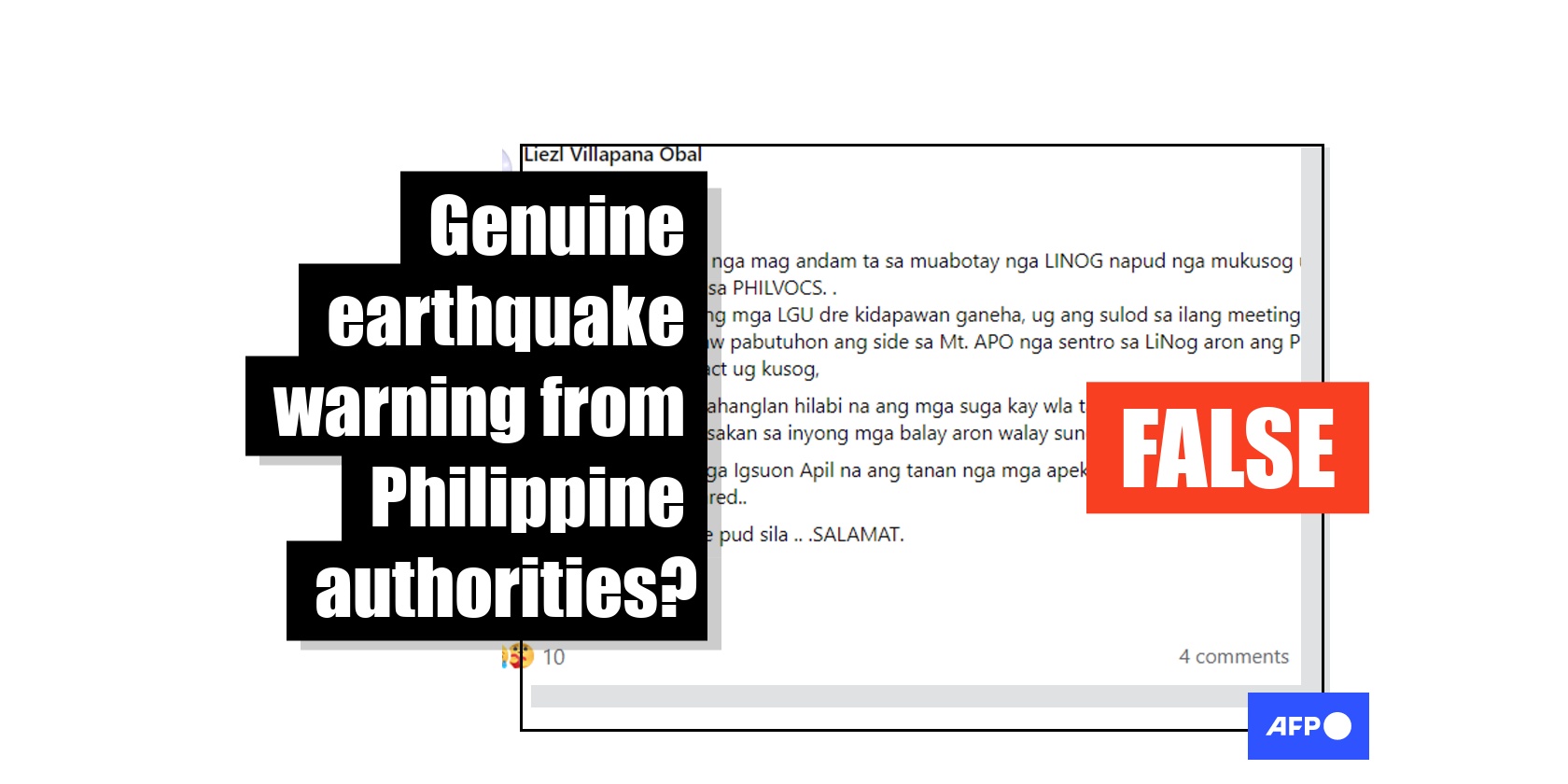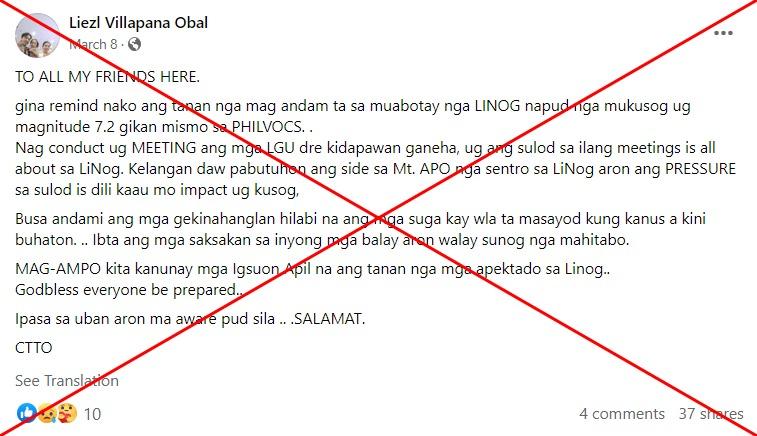
Philippine earthquakes spark fake online warning of further tremors
- This article is more than two years old.
- Published on April 18, 2023 at 04:44
- 2 min read
- By Ara Eugenio, AFP Philippines
The false warning was uploaded hours after a series of two strong earthquakes jolted the mountainous gold-mining province of Davao de Oro in Mindanao island on March 7, as reported by AFP here.
The Visayan-language Facebook post shared on March 8 translates to English as: "I am reminding everyone to prepare for an upcoming magnitude-7.2 earthquake that Phivolcs warned about."
Phivolcs is the Philippine government agency that provides information on earthquakes, volcanic eruptions and tsunamis.
The post went on to claim: "The local government of Kidapawan conducted a meeting earlier today and they only talked about this earthquake.
"They said the side of Mt. Apo that is going to be the epicentre of the earthquake needs to be blown up to relieve the pressure inside and make the quake's impact less severe."
Kidapawan, the capital of Mindanao's North Cotabato province, is located at the foot of Mt. Apo, a dormant stratovolcano which is the highest peak in the archipelago nation.
The post also urged people to prepare by unplugging electrical devices at home but did not give a specific date for when the purported quake would hit.
"Let us all pray always, brothers and sisters, including everyone affected by the earthquake," it said. "God bless everyone, be prepared. Please pass this on to others so they can be aware. Thanks."

Multiple Facebook posts published here, here and here shared the same false warning, with comments from some users suggesting they believed the claim.
"I hope we can find out when this will happen so we can prepare. This is just too scary," one user commented.
"I'm having goosebumps. Let's all take care and pray," another said.
The Philippines is regularly rocked by earthquakes due to its location on the Pacific "Ring of Fire", an arc of intense seismic activity that stretches from Japan through Southeast Asia and across the Pacific basin.
However, Phivolcs and the local government of Kidapawan both said the claims in the Facebook posts were false.
Fake alert
A representative for Phivolcs told AFP on April 11: "The posts are false. DOST-PHIVOLCS has not issued any warnings with regard to a magnitude-7.2 earthquake with Mt. Apo as its epicentre."
In response to the posts' claim that blasting the purported earthquake's epicentre could lessen its impact, Phivolcs said, "No. This is dangerous as it may trigger landslides."
On March 9, one day after the posts were shared online, Kidapawan's city government issued a statement denying it had devised a plan to blow up a part of Mt. Apo over the false earthquake warning. (archived link)
"This information is not true and this is fake news," it said in a Tagalog-language Facebook post.
"It's best to verify information first and we advise netizens not to spread these messages and other baseless information to avoid spreading panic."
Speaking to AFP in March, Phivolcs geologist Jeffrey Perez said it was impossible to know when and where an earthquake will occur.
"Earthquakes still cannot be predicted, that's why we need to prepare always," he said.
Fake alerts for natural disasters regularly spread on social media in the Philippines.
Copyright © AFP 2017-2025. Any commercial use of this content requires a subscription. Click here to find out more.
Is there content that you would like AFP to fact-check? Get in touch.
Contact us
